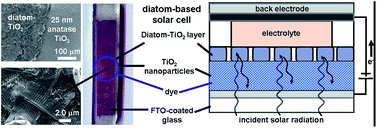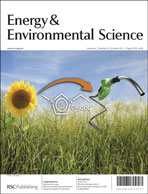The ability to produce low-cost, hierarchically-structured and nanopatterned inorganic materials could potentially revolutionize the way we fabricate photovoltaic, energy storage, and optoelectronic devices. In nature, many organisms carry out the hierarchical assembly of metal oxide materials through cellular and biochemical processes that replicate periodic micro- and nanoscale features by a bottom-up approach at ambient conditions. For example, single-celled algae called diatoms produce a nanostructured amorphous silica skeleton called a frustule. The insertion of other metal oxide materials such as titanium or germanium dioxide into the nanostructure of the diatom frustule could potentially be utilized to fabricate new dye-sensitized solar cells, nanostructured battery electrodes, and electroluminescent display devices. The exploitation of diatom nanobiotechnology for the development of novel device concepts in these areas is overviewed.
You have access to this article
 Please wait while we load your content...
Something went wrong. Try again?
Please wait while we load your content...
Something went wrong. Try again?


 Please wait while we load your content...
Please wait while we load your content...